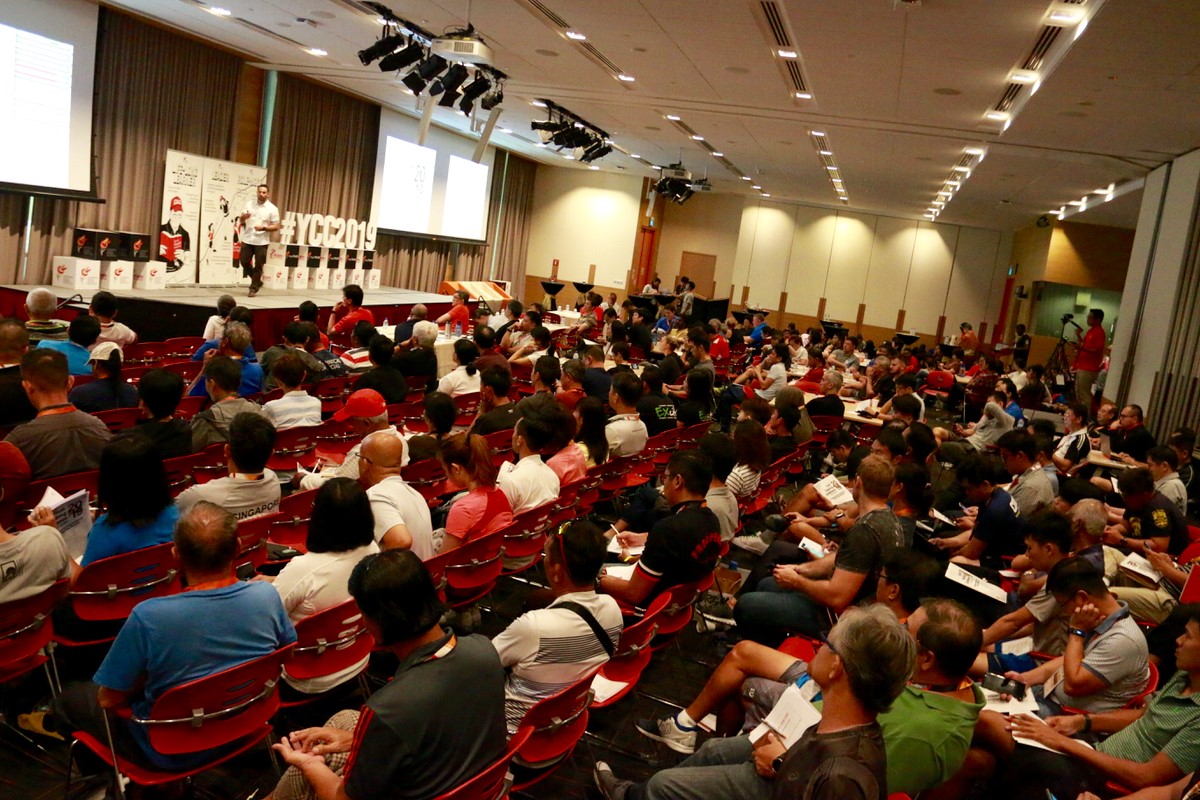Youth Coaching Conference Day 1

Participants at the Youth Coaching Conference (YCC) 2019
The National Youth Sports Institute (NYSI) held the third Youth Coaching Conference (YCC) at the Institute of Lifelong Learning on 25 January 2019.
250 participants signed up for the first day of the conference with 110 sports parents expected to attend the second day on 26 Jan.
Mr Andrew Pichardo, a PhD candidate of SPRINZ AUT, and Dr Israel Halperin, a postdoctoral researcher at the Memorial University of Newfoundland, were the keynote speakers for the Conference. Mr Pichardo discussed the importance and value of creating a nurturing environment for long term sporting success while Dr Halperin highlighted ways to bridge the science-practice gap for coaches.
“When we want to create a nurturing environment, you have to be creative in ways to engage them and keep them coming back for more,” Mr Pichardo shared.
Coaches were also advised to manage expectations with their athletes by defining clear goals and being explicit with them. For example, becoming an Olympic champion might not be the goal of some children. Hence, it is important for coaches to define goals with their athletes to help them see where they are right now and where they want to be.
In the second keynote, Dr Halperin provided strategies on how coaches can adopt an Evidence-Based Practice (EBP) so that they can use sports science to improve their craft.
“We humans suffer from a number of cognitive biases. Our memory is malleable. There are so many different biases that influence our thinking and cloud our judgment, therefore not making an optimal decision,” Dr Halperin explained. “If done properly, the scientific method can overcome many of the personal experience weakness.”
One of the key strategies would be to ask yourself if there are alternative explanations for the observed effect of the athlete. An example that was brought up was a sprinter who ran faster after taking Vitamin C.
“Did the sprinter run faster because of Vitamin C? Or was it because of the new resistance training programme that was added?” Dr Halperin challenged the audience. Using sports science can help coaches explore other explanations that may otherwise not be considered.
Following the second keynote, there was a panel discussion with Mr Pichardo and Dr Halperin.
“Email them,” was Dr Halperin’s encouragement to coaches when it was highlighted that many coaches do not have access to sports scientists and were unsure about how to practise EBP. He said that sports scientists welcome working with coaches.
In turn, Dr Halperin also added that sports scientists should spend more time in the field understanding the different sports before making sport science-related recommendations to coaches.
When asked about training easily-distracted adolescents, Mr Pichardo suggested “keeping the goal or purpose of the drill in mind as you do it” or “give positive reinforcement to groups of kids who can do it”.
In one of the workshops conducted, Mr Pichardo applied the Youth Physical Development (YPD) Model for training youth athletes. He demonstrated certain mobility drills that coaches can use for their athletes as part of their warm-ups.
He also reminded coaches to use relative value to encourage their athletes. “As a kid, you just want to be the one who can lift the heaviest weight. Your weight and size are not taken into consideration. Therefore, keeping perspective will also encourage younger kids to see where they actually stand.”
The NYSI sports science staff also introduced participants to the Adaptive Skills Training Model (ASTM). ASTM is defined as “adapting similar movement patterns in training environment to stimulate movement connectivity and skill transference through variation for main sport” with the “final objective of enhancing performance in sport”. Participants were introduced to the three different levels of the ASTM before breaking out into mini groups based on their various sports. Facilitated by the NYSI sports science staff, everyone had an opportunity to think through and try out ways to incorporate ASTM into their sport.
Dr Wan Rizal, a senior lecturer from Republic Polytechnic, conducted a workshop on the constraints-led approach to training youth athletes, Dr Rizal took participants on a hands-on journey by constructing three different constraints-led scenarios. The first two scenarios were modified invasion ball games with a maximum of 4 players per team during practice for optimal learning because decision-making stress increases the more players there are. The third scenario, modified badminton, established that the coach’s choice of rules affect gameplay.
For Day 2 of the YCC, there will be a programme specifically for sports parents. It will be held at the Lifelong Learning Institute and will begin at 9 am tomorrow.